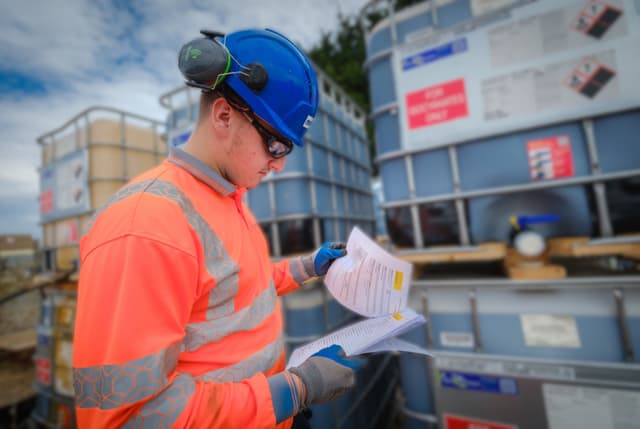The key to achieving the right value on the sale of your business is ensuring that each aspect is as robust as possible. It can take time to ensure that there is a track record of financial and operational excellence, but this will increase the likelihood of a buyer understanding the quality of the business and agreeing a fair price, whilst at the same time minimising the risk of the deal stalling at a later stage.
Step one: Optimising your business
When considering the sale of your business, a thorough assessment across multiple key areas is crucial to ensure a successful transaction. Assessing the business’s fundamental health is pivotal – the basics must be in place for anything additional to function correctly. Scrutinise its financial history, focusing on its track record of profitability and reliable reporting.
Beyond this, the people factor is crucial. With customers, review the status of contracts and relationships and mitigate reliance on a few major clients. On the employee side, identify and address talent gaps within the organisation. It’s also worth considering which individuals are vital to retain in case of a sale.
Governance and compliance form the backbone of a reputable business. Stay abreast of relevant regulations and certifications, ensure meticulous records are kept, and keep track of regulatory changes that could impact the business landscape. On the tax front, ensure the business is compliant in any relevant markets and seek specialised advice on potential risk areas such as IR35, CIS, or VAT.
Lastly, securing the supply chain is essential. Foster longer-term relationships with suppliers and mitigate any risks of supply disruption that could affect the business.
Step two: Setting a strategy and appointing professional advisers
For businesses eyeing a sale, assembling a reliable team of professional advisers is a crucial step. But how do you ensure you’ve got the right team on your side?
A good advisory team will go beyond a surface-level view, delving deep to understand your business from the inside out, and will closely guide you through the process from start to finish. They will mitigate risk where possible, and keep a close eye on the detail at every stage. A sale is generally a high-contact process, and the very best advisers will act in partnership with you to achieve a successful result.
When selecting advisers, there are crucial considerations to keep in mind. First, evaluate their credibility and track record: are they a reputable, established company? What experience do they bring to the table? Next, assess their support capacity. Can they handle your sale effectively and will they collaborate with your legal and professional teams? Consider whether their skills match with what you need: have they successfully handled sales of similar-sized companies? Do they have access to specialists like tax or financial planners if needed?
Finally, integrity is key. While it’s tempting to gravitate towards those that promise the highest valuation, it’s wiser to choose advisers offering a balanced approach based on a deep understanding of your business and personal aspirations. This approach minimises future disappointments, ensuring a smoother journey towards a successful sale.
This isn’t necessarily a quick process – it can often take up to three months to identify an adviser who is the right fit for your business, so it’s important that it’s built into your timeline.
Step three: Deal preparation
At this stage, the focus will shift towards presenting your business strategically. Based on your objectives, your advisers can collaborate with you to develop a bespoke exit plan and assist in presenting the business to suitable buyers: this can take three months or more.
The first step in this plan involves crafting a Confidential Information Memorandum (CIM). This comprehensive document offers a glimpse into your business for potential buyers. From business overview to financials, customer base, market analysis, and unique selling points, the CIM paints a vivid picture of your operations. Your professional advisers will work alongside you to ensure a true portrayal of your business that will withstand a buyer’s due diligence.
Once the CIM is ready, the hunt for relevant target buyers will begin. This stage demands adept advisers with robust research skills and market experience. Leveraging their networks means you can tap into a wider audience, increasing the chances of finding the perfect buyer for your business objectives.
Step four: Finding a buyer
Now is the time to go to market. At this point, your professional advisers will take the reins, leading the way in reviewing offers and managing negotiations. However, it’s crucial to maintain ‘business as usual’: limiting the impact on the business is critical to maintaining full value through the process.
When in negotiations with potential buyers, it is important to keep in mind that this stage of the deal process typically takes three to six months to complete. Your adviser will work with you to maximise the price offered and establish the broad terms of the deal, as well as setting expectations and parameters for how the rest of the process will proceed. The best way to do this is by creating a Heads of Terms or a Letter of Intent that clearly outlines the key terms of the agreement. By doing so, both the seller and prospective buyer can establish a clear understanding of the deal’s parameters and work towards a successful outcome.
Step five: Deal execution
After agreeing on headline terms, sellers often grant buyers a period of exclusivity to finalise the transaction. This phase allows time for due diligence, a time-consuming process demanding substantial resources from both parties. It’s crucial to plan for this from the outset, as it can take between six and twelve weeks and typically covers financial, tax, and legal as a minimum.
While this takes place, negotiations will likely be ongoing on aspects such as the completion mechanism – Locked Box versus Completion Accounts – and adjustments related to Net Working Capital and Surplus Cash.
This phase also involves negotiating the Share Purchase Agreement (SPA), a legal contract outlining the terms and conditions of the sale and purchase of shares. It will cover various aspects of the transaction, such as the buyer and seller details, the number and price of shares, representations and warranties, conditions precedent to the sale, liabilities, indemnities, and any post-completion obligations. It’s crucial to communicate with your legal team to ensure the SPA aligns with the intentions of both parties.
Step six: Post completion
After all the hard work, the seller can finally reap the rewards of the deal. However, it is important to remember that once the deal is complete, there is no going back. This highlights the importance of careful planning and foresight from the beginning of the deal-making process.
Post completion, there is likely to be a period of six months or more where subsequent documentation is drawn up. This might include Completion Accounts – which document the financial position of the business up until the point of the transaction’s completion – or Earn Out Accounts if a portion of the sale price is contingent upon any performance targets post-sale.
Ultimately, a successful sale often comes down to preparation, which takes significant time. Patience and diligence in optimising the business, appointing the right advisers, and presenting the company strategically will ensure a smoother transition and enhance the likelihood of securing the best possible deal.
To learn more, you can also download Menzies’ Selling your business whitepaper here, which provides a step-by-step guide on the selling process, and what to expect along the way.













